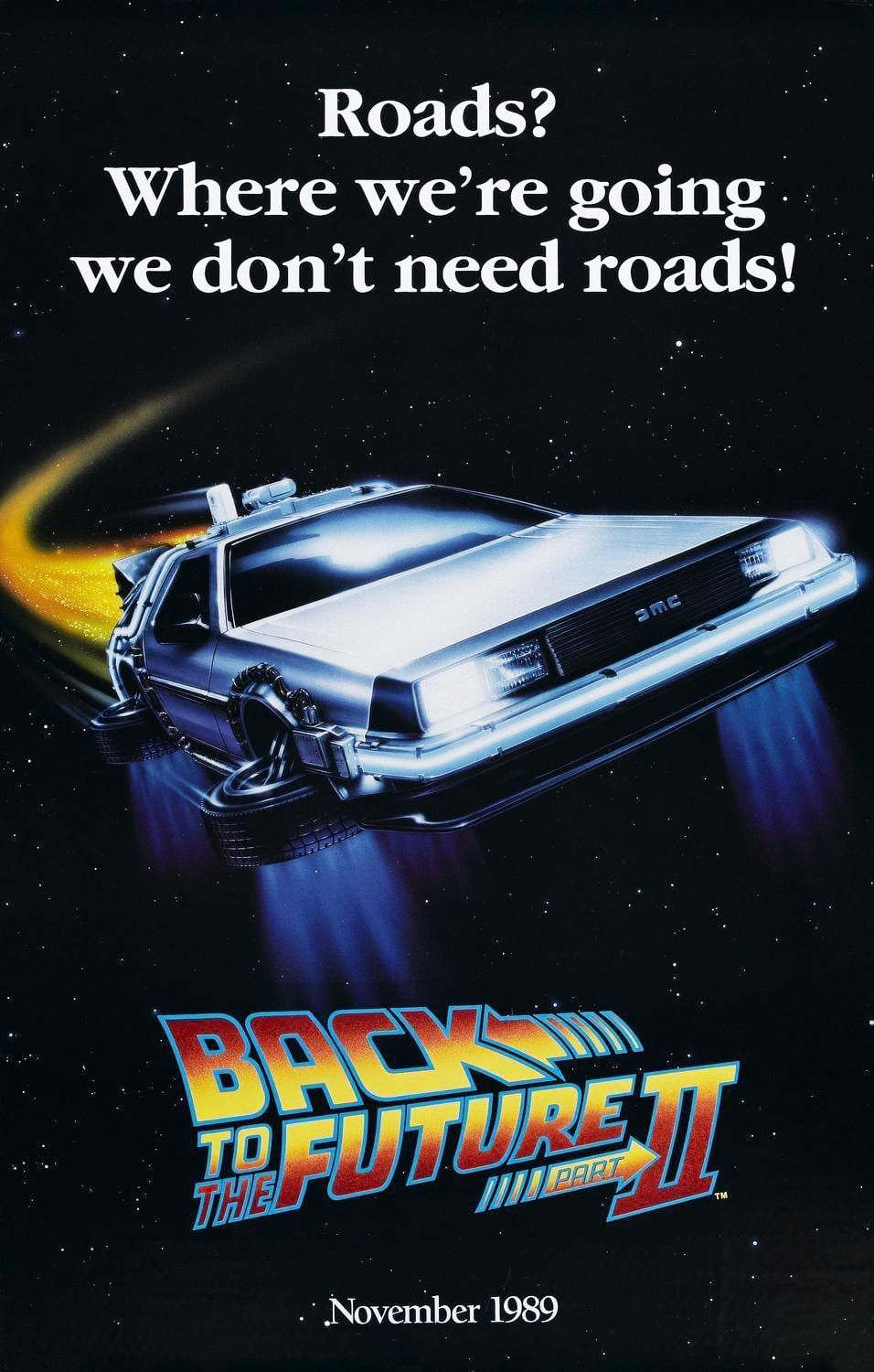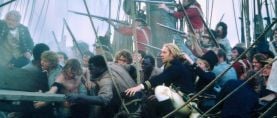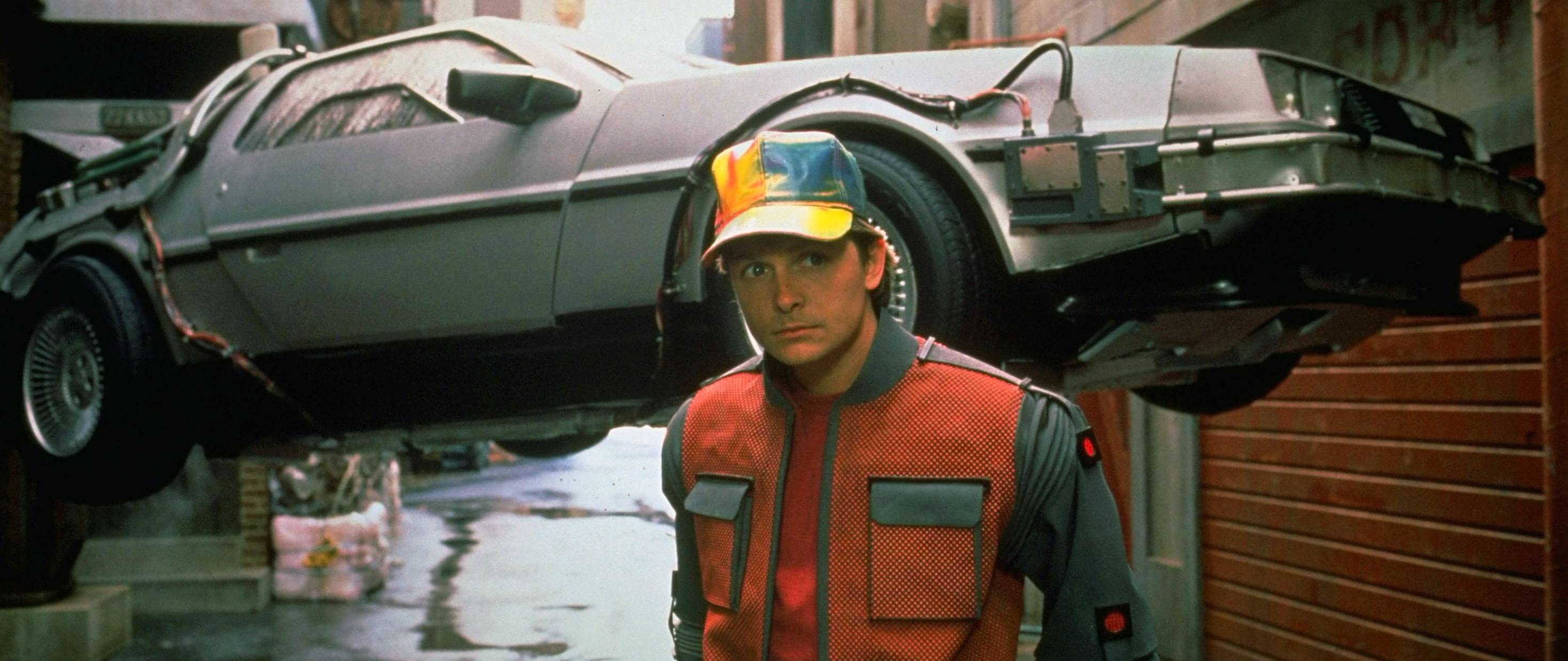
BTTF 2 — Back to the Future Becomes a Series
Director of photography Dean Cundey, ASC and production designer Rick Carter discuss returning to Hill Valley, revisiting 1955, and creating a relatable 2015.
It has been almost five years since writer-director Robert Zemeckis concluded his comic adventure film Back To The Future, with the promise that there was more to come. Since then, audiences around the world have eagerly awaited the next escapade of Marty McFly, the American teenager who traveled back in time. With the current release of Back To The Future Part II, Zemeckis finally makes good on his promise.
Thinking into the future himself, Zemeckis teased the audience in his ending to the first film. At the conclusion of Back To The Future, the eccentric scientist Doc Brown (Christopher Lloyd) returns from the future and spirits Marty (Michael J. Fox) and his girlfriend out of the house and into the time travelling DeLorean, which whisks them off into the year 2015. Back To The Future Part II continues the adventure exactly where the first film left off.
Reuniting the original cast and crew took five years, but the sequel promises to be well worth the wait. It was Back To The Future that began the highly successful collaboration of writer-director Zemeckis and director of photography Dean Cundey, ASC. In 1988, Zemeckis and Cundey teamed up for a second time on Who Framed Roger Rabbit?, for which Cundey received an Academy Award nomination.
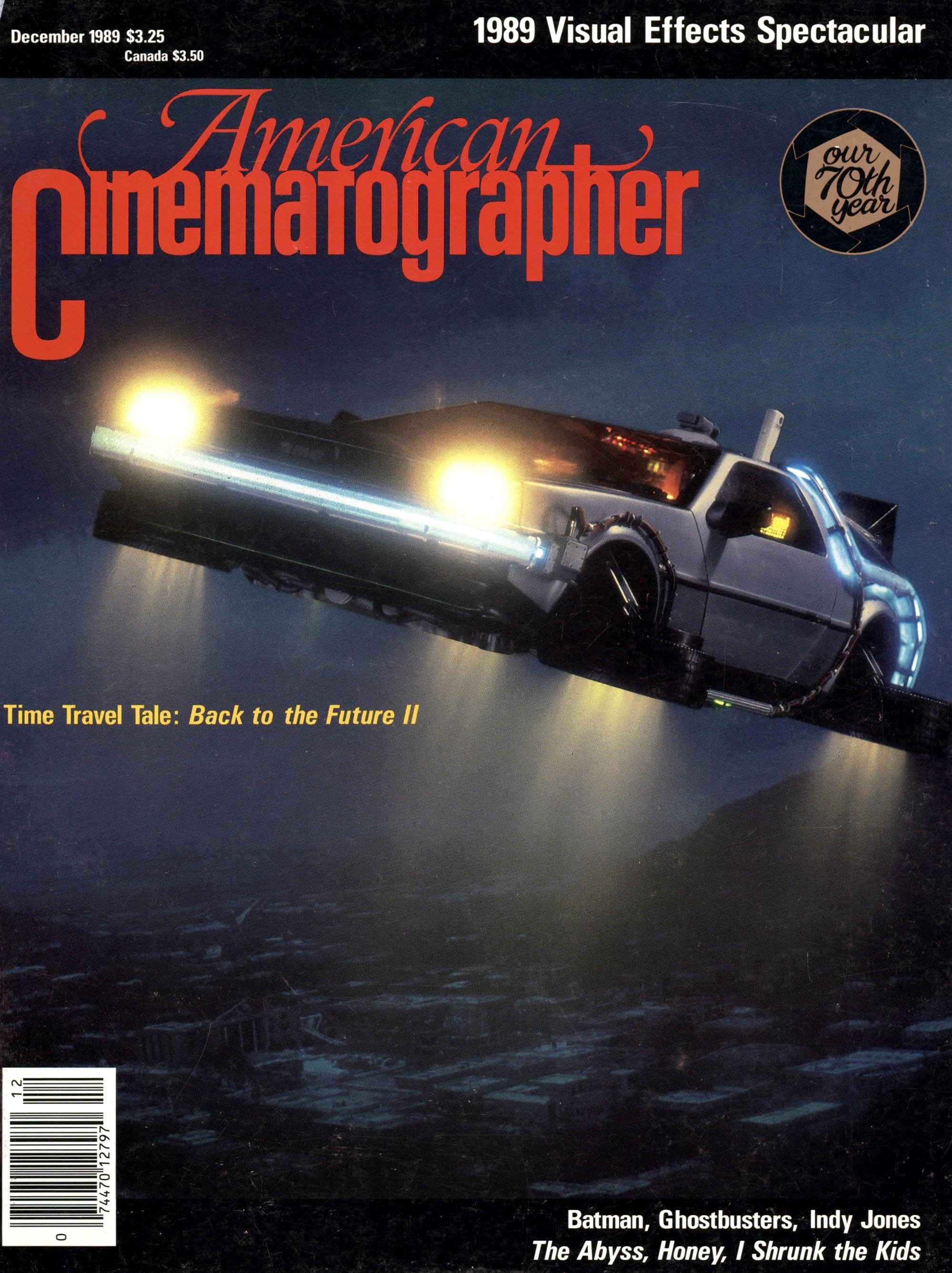
Now united for a third time, Zemeckis and Cundey traveled back in time themselves, returning to the back lot of Universal Studios where the sets and locations of the original film were reconstructed for the sequel. Marty McFly returns to the past once again, and actually goes back into the scenes of the original film. By using extensive special effects sequences and recreating those scenes, Zemeckis and company were able to bring Marty back to experience the past and the present once again—but this time from different perspectives. BTTFII goes one more step by allowing characters to revisit different times in their lives, and actually interact with themselves.
“I thought that Who Framed Roger Rabbit? was as complicated as it was ever going to get," Cundey says. "But when we started BTTFII, I realized that this film would be even more complicated than Roger."
Cundey had to design and create lighting schemes for four different time periods. Each period had to have a unique look and mood. “In the film we show what are basically the same sets and locations in the fictional town of Hill Valley, only at different times in Marty's life," Cundey explains. “This meant that each period had to give the audience a different feeling about that time. Sometimes are more pleasant than others."
Back To The Future Part II can be separated into four different time periods: (1) the Present — 1985, (2) the Future — 2015, (3) the Past — 1955, and (4) an altered Present — 1985.

“We shot each period trying to convey to the audience a different interpretation of the settings," Cundey says. “Bob generally favors low angles and wide lenses. As with any Bob Zemeckis film, you have wonderful settings and backgrounds for the characters. The places are very important to the story. It means that I always have to light a large area. While it's sometimes hard to be 'painterly' with the light, it's always a great challenge to work this way. The use of the wide lenses seems to create an atmosphere in the theater in which the audience feels as though they are included and a part of the locations.
“We all discussed that the Present would be the least attractive or pleasurable of the different time periods." Cundey explains. "Since it is the most familiar period, it's also the most realistic. I used lighting that would feel familiar to the audience. We used a lot of practicals, fluorescents and mercury-vapor lights. For the more nostalgic periods of the Past and the Future, I wanted obviously a warmer look. I used only incandescent lights and was conscious of keeping any ‘ugly’ light, especially fluorescents and mercury-vapor, out of the shot."
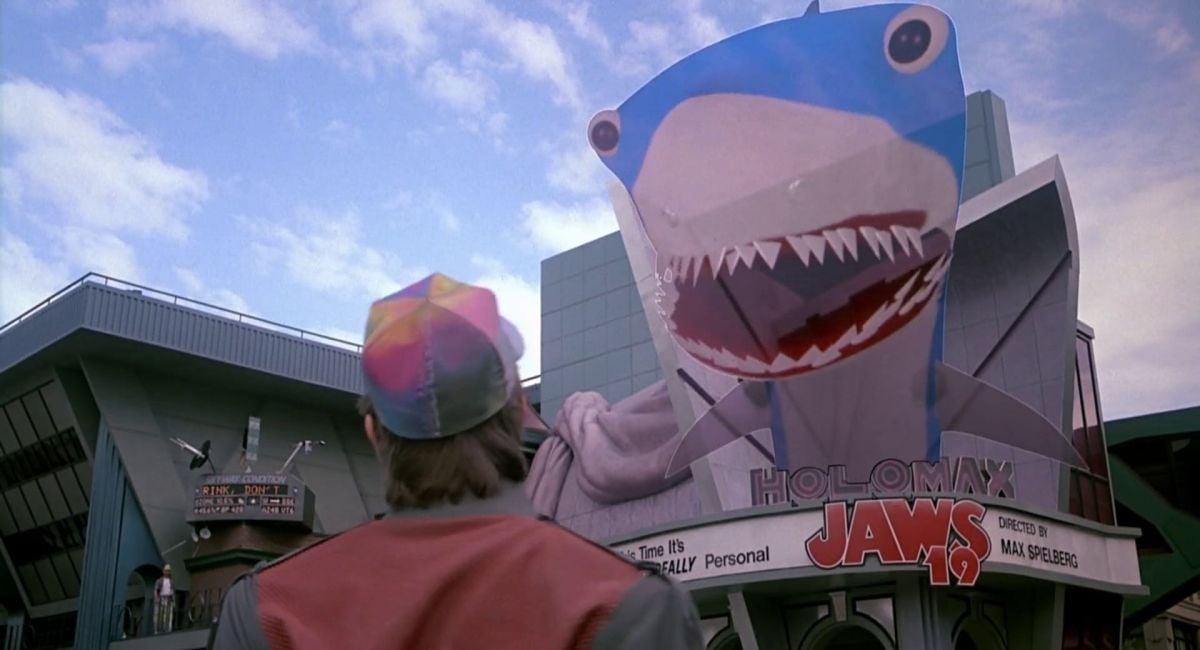
In reconstructing the scenes from the first film which took place in 1955, Cundey and production designer Rick Carter were faced with the difficult task of creating an exact duplication of what had been done many years before. (Lawrence G. Paull was the production designer on the original film.) “Since we start off at the exact point where the first film ends,” Cundey maintained, “the idea is that you could put the films together and watch them straight through on a Sunday afternoon.
“We went into shooting the sequel with the feeling that when the audience was watching the new film they would be making comparisons and references to the first one. With video you could create one long movie by watching the two together. What it meant from a technical standpoint was that we had to recreate the lighting exactly as it was for the first film. I was lucky to have most of the same crew with me again. They remembered where we put certain lights and things.”
Key sequences, such as the “Enchantment Under The Sea Dance” in which Marty’s parents kissed for the first time, were recreated, enabling Marty to re-enter the scene and interact with the Marty of the first film. To create sequences in which the same actor can portray multiple characters all interacting in one shot, Cundey developed with Industrial Light & Magic what is being called the Vistaglide by some and “The Tondreau Dolly" by others.
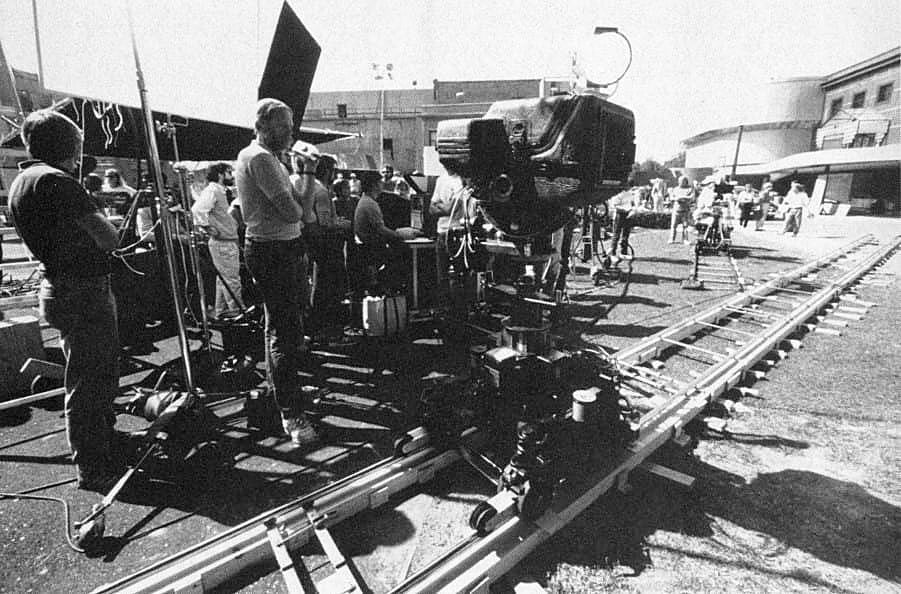
“Tondreau dolly," was developed to
capture moving split
shots, enabling actors
to play more than one
role in the same shot
without necessitating
a locked-off camera.

“On the set, we refer to it as the Tondreau Dolly,” Cundey says. “It was the technical brilliance of Bill Tondreau, the engineer at ILM who created the software to operate the motion control in real time."
The Tondreau Dolly is a portable, computerized dolly system which remembers the complete movements of the camera. The computer then recreates the movements so that multiple images can be composited in such a way that the different characters played by the same actor seem to be performing in the same shot with each other.
“We started thinking about it after Bob and I finished shooting Roger Rabbit.” Cundey explained. “Before the Tondreau Dolly was built, you could recreate by computer only the tilts and pans of the camera. But to shoot this film on real locations, we needed a portable unit which could also remember the movement of the camera.”
The dolly allowed Cundey to move the camera freely to create shots in which the action follows one character into the shot, picks up a second character played by the same actor or actress, and then follows this second character out of the shot. Prior to the invention of the Tondreau Dolly this shot would have been impossible. “We simply moved beyond the old restrictions of having to lock down the camera,” Cundey maintains. “Beyond this, we found other uses for the dolly which we had never thought about. For example, in the scenes which take place in 2015, the cars fly rather than drive on the roads. We realized that the Tondreau Dolly would be a perfect device for dealing with the cables that suspend the floating objects. We could remove the cables by compositing over the wires the same exact shot, except without the suspended objects.”
Using the Tondreau Dolly meant adapting the production design to accommodate the large piece of equipment. “First of all, everything on the stage had to be wild,” Carter explains. “We also had to reinforce everything so that there was absolutely no play in the platforms. On the Tondreau shots, the camera makes numerous passes which had to be exactly the same. Any small movement could ruin the entire shot.”
Cundey’s approach to the scenes which take place 30 years into the future in the year 2015 — was to create a look which he likes to term as “user friendly.” He elaborates: “We wanted the future to be an extension of 1989. The visuals had to be recognizable, yet just different enough in their approach to color to make it feel a little more pleasant and have that warm nostalgic quality. We never wanted it to become so futuristic that it wouldn't be accessible.”
Rick Carter also describes the film’s approach: “We attempted to demystify the future by making it seem optimistic in a very humanistic way. It is a future which should be as clear and known as the past. It was important to design a future based on points of reference from today. It should appear eclectic, as if the town truly evolved into the future.”

“As the film takes us from 1955 to 2015, we see the town square of Hill Valley evolve. What’s fun in watching the films is that you see how the locations change over time,” Cundey believes. “There is a part of the film in which Marty returns to 1985 to find out that Biff Tannen [Thomas Wilson] now runs the town. We called this period of the film ‘Biff Horrific’ because the pleasant town square has now been turned into your worst nightmare. For example, the quaint little courthouse has now been turned into a casino called ‘Biff’s Pleasure Palace.’
“My approach to the ‘Biff Horrific’ segment was much different from the others. I thought it was important to become more claustrophobic with the camera so that you feel Marty’s reaction when he sees what’s happened. I used mostly long lenses to compress the shots so that the town was more imposing and foreboding. We turned the back lot of Universal into this gritty, decadent-looking set. We used a lot of neon and blinking lights on the facades of the buildings. I wanted to see a lot of movement in the lights.”

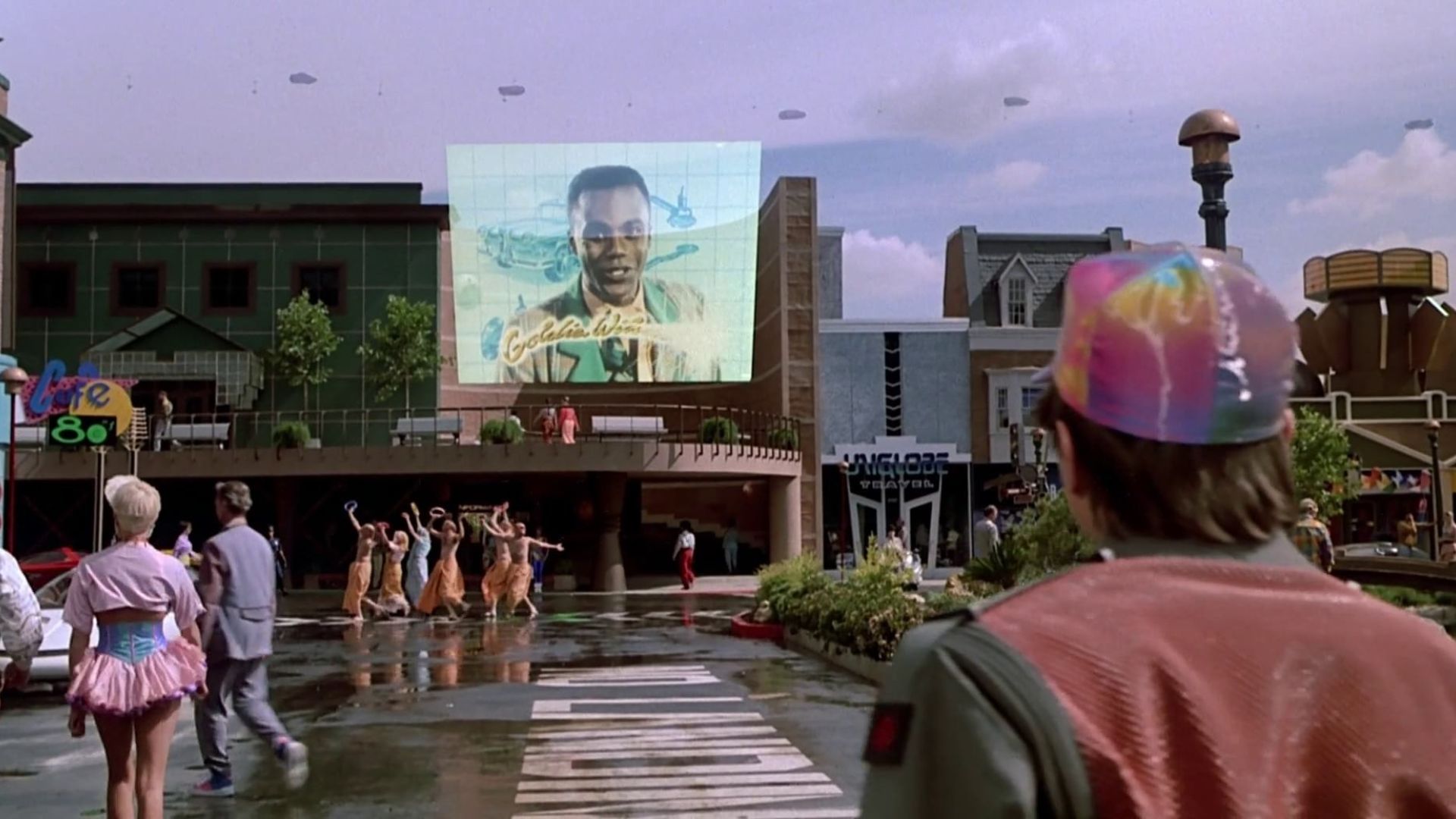
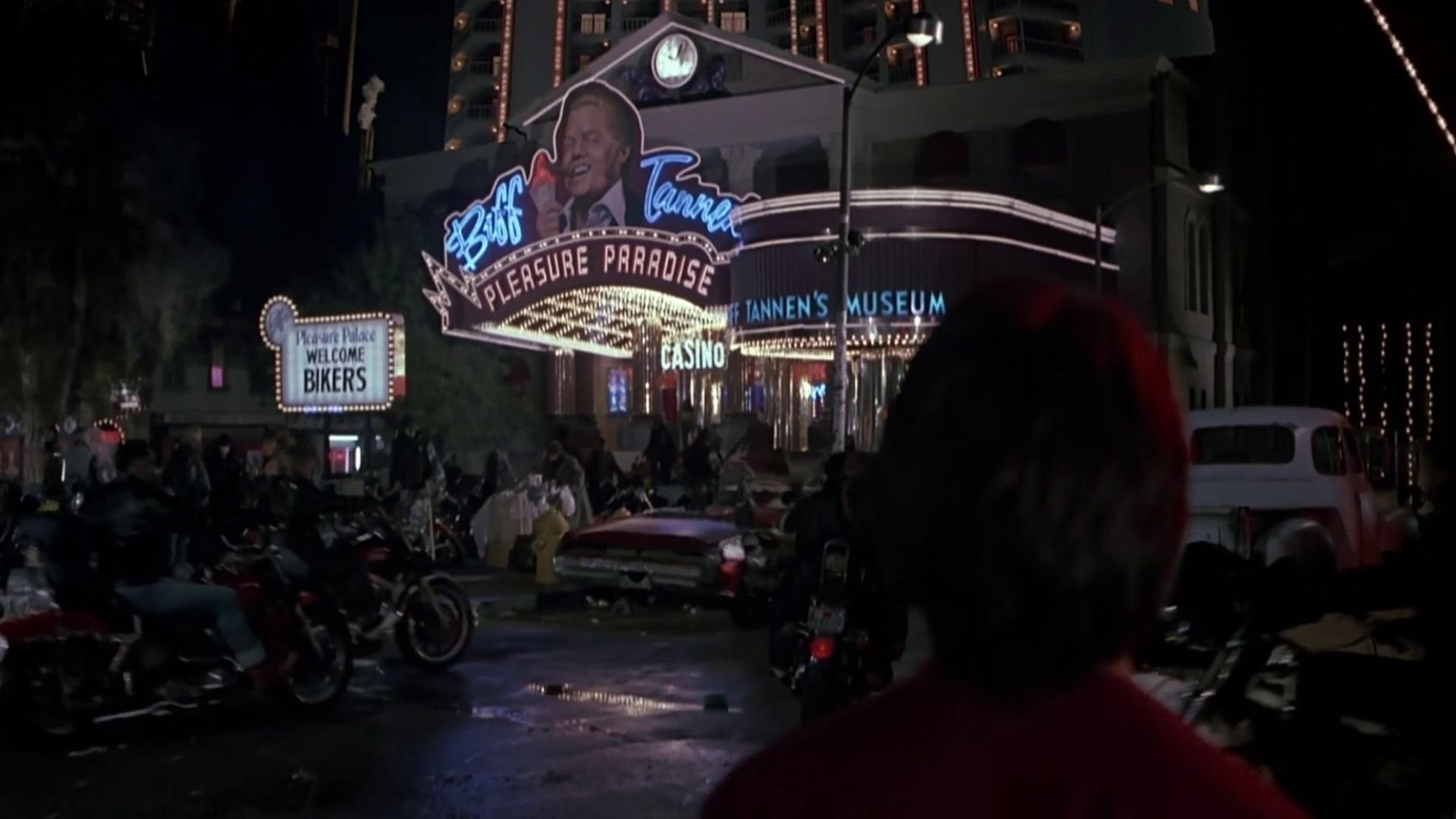
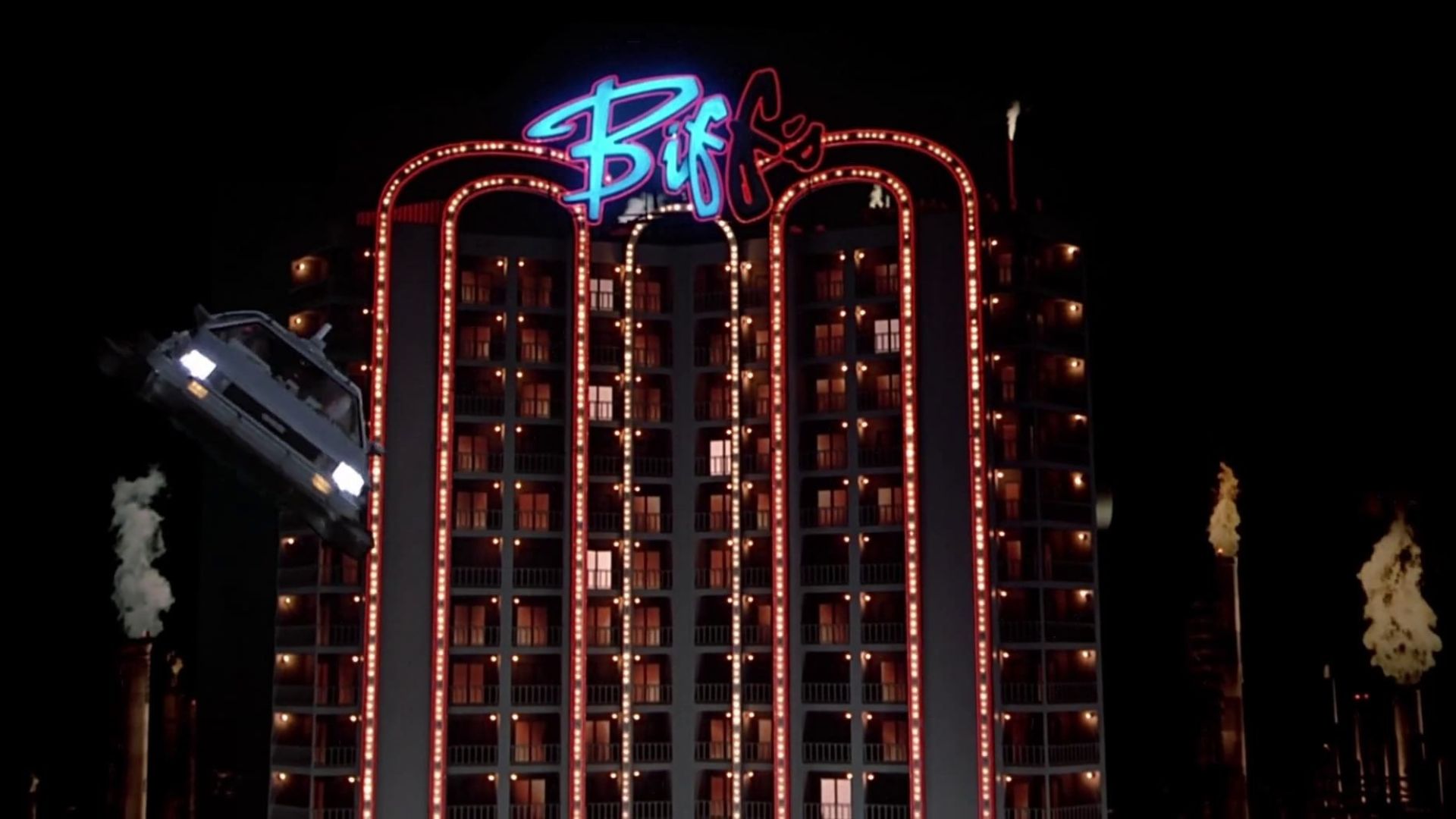
For the interiors, Cundey placed the lights behind pillars and around corners. “Rick Carter built this wonderful set for Biff’s penthouse apartment which resembled a tacky Las Vegas hotel room,” Cundey remarks. “I wanted to bring out the gold leaf and gaudiness of the place.”
“We wanted most of the 'Biff Horrific' sequence to feel quite dark,” Carter stated. “Most of the scenes take place at night. I wanted the colors to be mostly blacks, deep blues and maroon — like a big bruise.”
“As a cinematographer, I guess what I enjoy most is to mix different colors in the frame,” Cundey says. “It was a lot of fun shooting the ‘Biff Horrific’ sequence, because I could backlight with different colors of neon and create contrasts with the light. While we have become accustomed to seeing night with cool blue moonlight there’s not much color in it. I prefer to include other colors and photograph people under a warmer and more attractive light.”
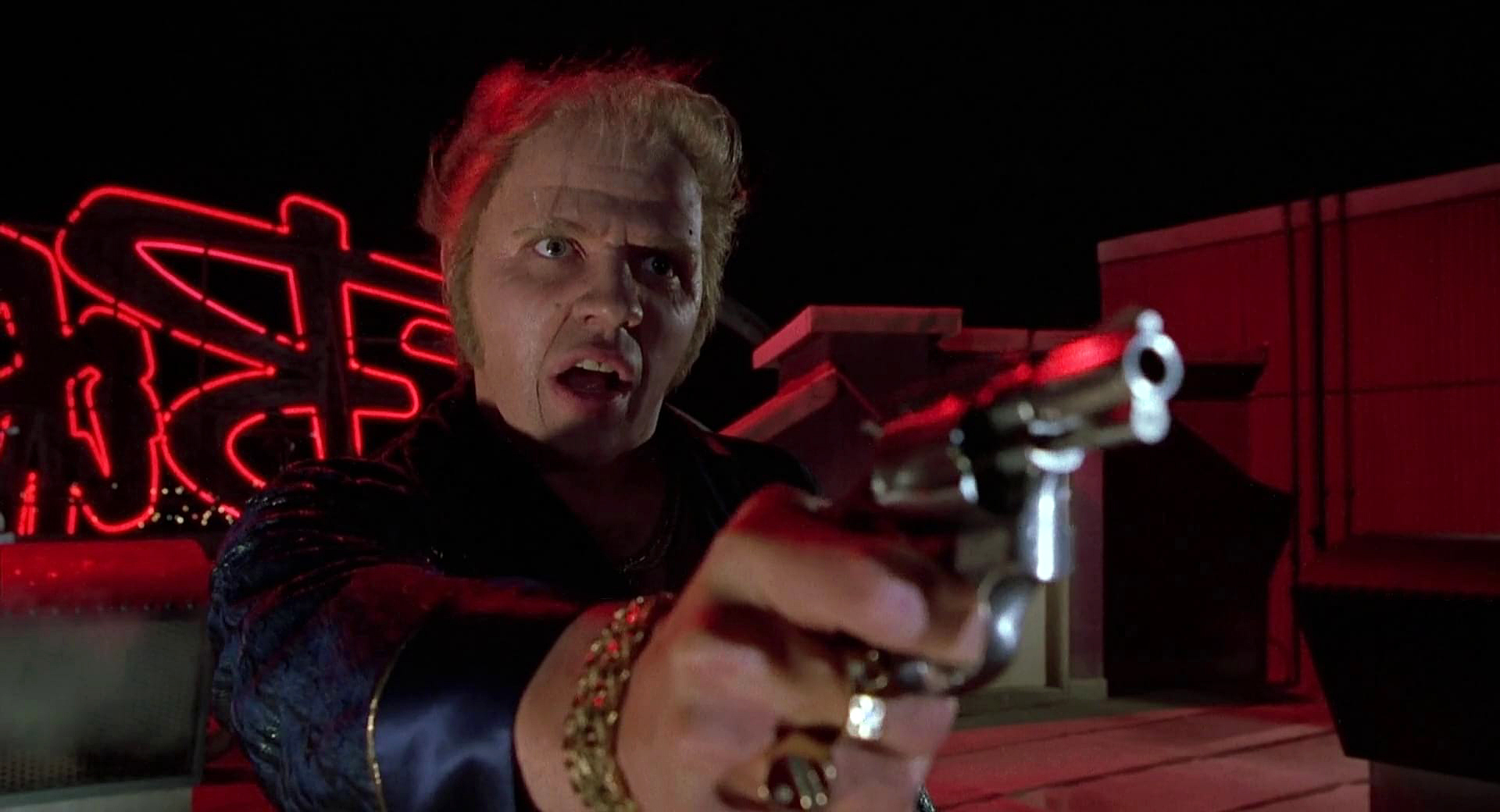
One of Cundey's main concerns in shooting the Back To The Future films was the special effects make-up, which aged the actors as much as 50 years. “You have to be sensitive to the needs of the make-up guy, who is creating old age using rubber and paint,” Cundey says. “It’s difficult to create a realistic skin texture using appliances. I have to watch very carefully for cracks or creases in the make-up. I must make sure that my lighting doesn’t call attention to the make-up. What’s interesting is that it varies from day to day. On one day a cross light will bring out the texture of the appliance and on another day it won’t. You have to be careful and accommodate the appliances.”
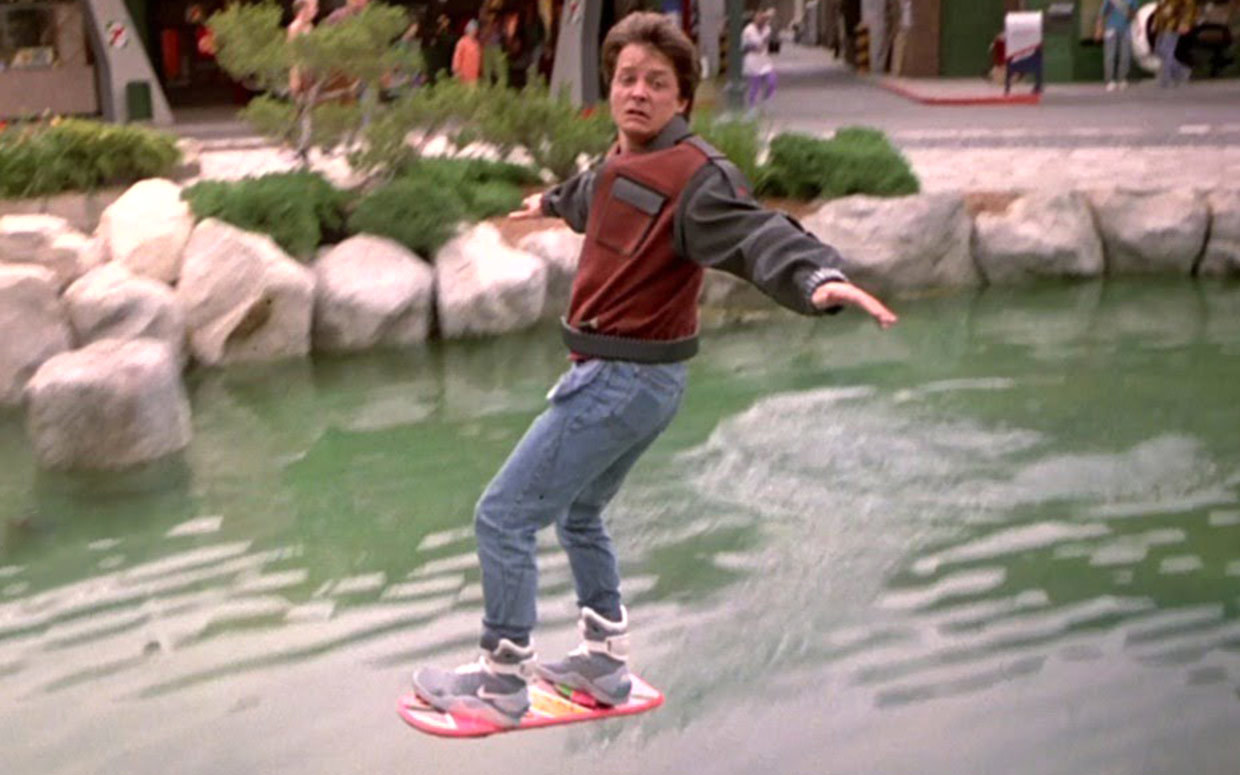
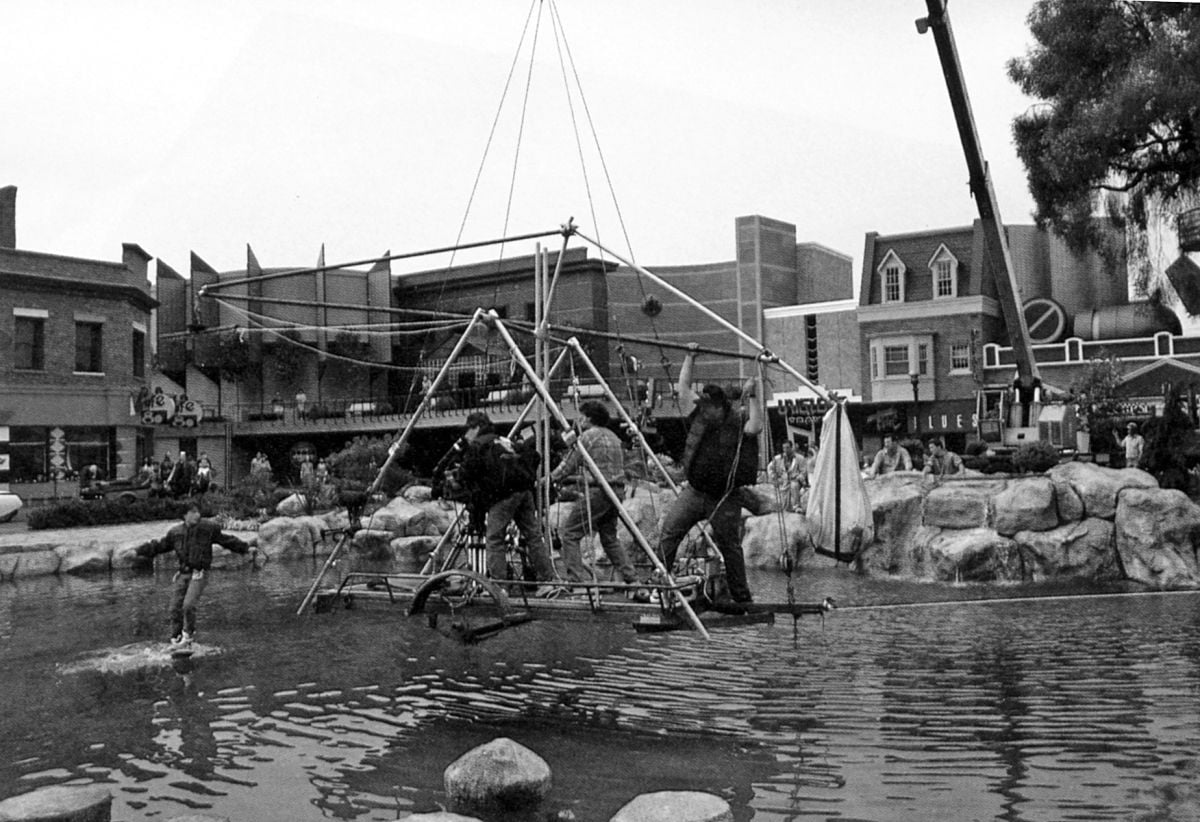
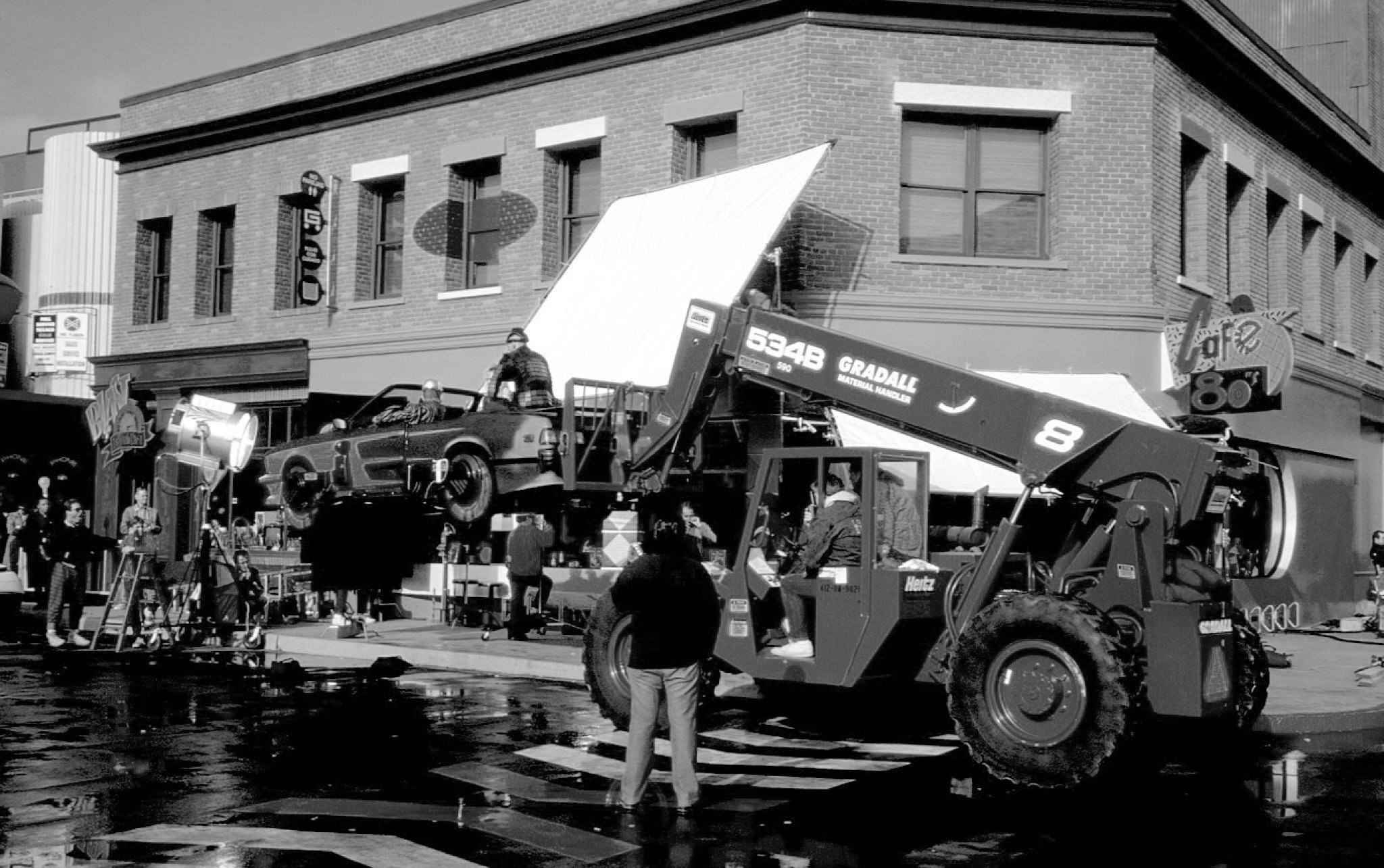
In Back To The Future Part II, the creative team of Zemeckis, Cundey and Carter again attempts to transport the audience into the fictional town of Hill Valley, where they can join the wild ride through time with Marty McFly. “What we are trying to do is put elements in front of the camera which will hopefully make the time traveling plot visceral and fun.” Carter explains.
“What I think is really great is that the audience takes what Dean and I do for granted. The visuals are never imposed on the audience. As opposed to most fantasy and science fiction films, I don't think anyone is ever supposed to be in awe of what they are watching. The idea is to create a more intimate feeling between the audience and the characters. As with most of Bob Zemeckis’ films, I guess what we are trying to create on the screen is this wonderful feeling of nostalgia.”
